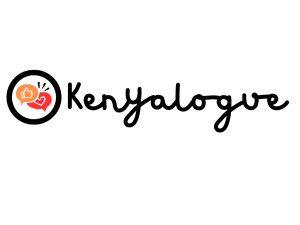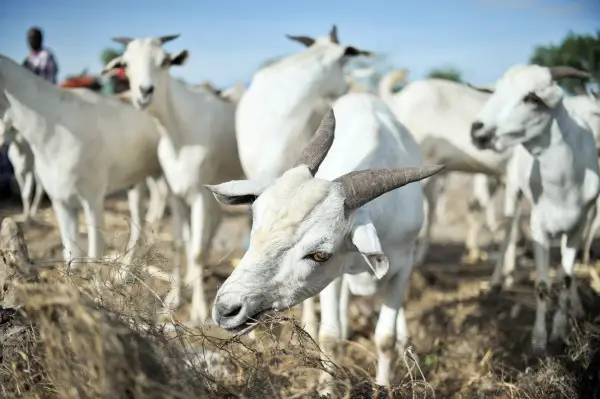In Kenya, small-scale farmers increasingly turn to goat farming as a lucrative venture.
One breed rapidly gaining popularity is the Galla goat, indigenous to the Arid and Semi-Arid Lands in Kenya, Somalia, Ethiopia, and Djibouti.
Renowned for their meat and milk production capabilities, Galla goats are highly adapted to harsh conditions.
In this post, I will delve into the physical characteristics of Galla goats, their housing and space requirements, feeding, potential challenges, market opportunities, and determine whether Galla goat farming in Kenya is a profitable venture.
Characteristics of Galla Goats
I. Distinctive Features and Size
Galla goats are a striking breed with a white coat and distinctive black features, including their muzzle, skin, nose, feet, and tail.
They are sizeable animals, with adult males weighing up to 70 kg and females up to 55 kg.
II. Exceptional Milk Production and Quality
These goats are primarily raised for meat, but they have also gained recognition for their exceptional milk production, with a daily output of 3 liters—surpassing crossbreeds and indigenous breeds that yield only 1.5 and 0.5 liters, respectively.
The quality of their milk is highly sought after for its exceptional nutritional value, fetching a premium price of Sh200 per liter at the farm and Sh300 in supermarkets.
III. Numerous Health Benefits
Compared to cow milk, goat milk is known to provide numerous health benefits, including increased calcium levels and amino acids necessary for healthy bone development.
Its fatty acid content of 35% is twice that of cow milk, making it a preferable choice for individuals with delicate digestive systems or in recovery.
Furthermore, its low fat and cholesterol content makes it a healthy option for children.
IV. Resilience and Low-Maintenance
Galla goats are known for their resilience and ability to thrive in harsh, drought-prone environments.
They have good growth rates and are resistant to various diseases and internal worms, making them a low-maintenance option for livestock farming.
Despite their imposing size, they are generally docile and easy to handle.
While Galla goats are hardy, they are not well-suited to cold and wet climates and are best kept in low-altitude regions.
Nevertheless, they can be crossbred with other breeds to produce hybrid offspring with desirable characteristics.
Housing and Space Requirements
Galla goats require proper housing and adequate space to ensure their comfort and well-being.
Ideally, they should be housed in a clean and dry shelter with good ventilation to prevent respiratory infections.
The shelter should also be free from drafts and have sufficient space for the goats to move around.
A good rule of thumb is to provide at least 10 square feet of indoor space per goat.
The shelter should also have a roof to protect the goats from extreme weather conditions.
Feeding
Galla goats are a breed of hardy browsers known for consuming a wide range of vegetation, such as woody plants, herbs, vines, shrubs, and other plant materials.
This diverse diet provides them with the essential nutrients for optimal health and well-being.
Due to their tenacity and adaptability, Galla goats can thrive in challenging environments where other livestock may struggle.
By consuming a diverse range of plants, these goats can obtain a broad spectrum of nutrients that result in the superior quality of their milk.
Potential Challenges
- Overgrazing: Hardy browsers tend to overgraze and deplete natural vegetation, which can cause soil erosion and negatively impact the environment.
- Nutritional Deficiencies: Although Galla goats can consume a wide range of vegetation, they may still suffer from nutritional deficiencies if they do not have access to a diverse diet.
- Health Challenges: Hardy browsers can suffer from various health challenges, such as internal and external parasites, diseases, and infections, which can be challenging to manage in remote locations.
- Predation: Hardy browser goats are often targeted by predators such as hyenas, leopards, and wild dogs, which can lead to significant losses for farmers.
- Limited Market Opportunities: There may be limited market opportunities for goat products such as meat and milk, especially in remote or rural areas.
- Water Scarcity: Galla goats are adapted to arid environments but still require access to water. Water scarcity can negatively impact their health and productivity.
- Competition for Resources: In areas where multiple species of hardy browsers are present, there may be competition for resources such as food and water, which can impact their growth and survival.
How Much Is A Galla Goat In Kenya?
In Kenya, the purchase cost of Galla goats varies depending on factors such as age, gender, and breed.
On average, a 6-month-old male Galla goat can cost around Sh8, 000, but the price can go up to Sh50, 000 when it matures at 15 months.
Conversely, female Galla goats tend to have lower prices than males, with a 6-month-old female going for Sh7, 000 and a mature female selling for Sh30, 000.
In comparison, the local breed only gains 40kg for males and 20kg for females, resulting in market prices between Sh 8,000 to Sh 15,000 upon maturity.
Market demand, seasonality, and location are some of the factors that can affect the price of Galla goats.
Galla Goats Market in Kenya
Galla goats are highly sought after, and their meat and milk have a ready market.
Farmers can sell their goats to local butcheries, supermarkets, or individuals. There are also export opportunities to other countries.
When purchasing or selling Galla goats in Kenya, it’s crucial to buy from trusted sources.
To avoid scams or half-breeds, farmers must acquire their goats from certified breeders approved by the Directorate of Veterinary Services or the Kenya Agricultural and Livestock Research Organization (KAIRO).
Certified Galla goats are vaccinated against diseases according to the standard procedures laid out by the Directorate of Veterinary Services, increasing their chances of survival, better overall health, and quality.
Therefore, acquiring certified Galla goats is essential to maximize profits, as they can fetch higher prices in the market.
Final Verdict
Overall, Galla goat farming in Kenya can be profitable.
Nonetheless, the challenges associated with Galla goat farming discussed earlier can impact its profitability.
Therefore, it is critical to conduct extensive research, evaluate market demand and prices, and establish a sound business plan before embarking on Galla goat farming in Kenya.
Related: Dorper Sheep Farming In Kenya



